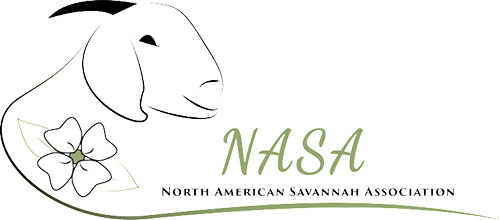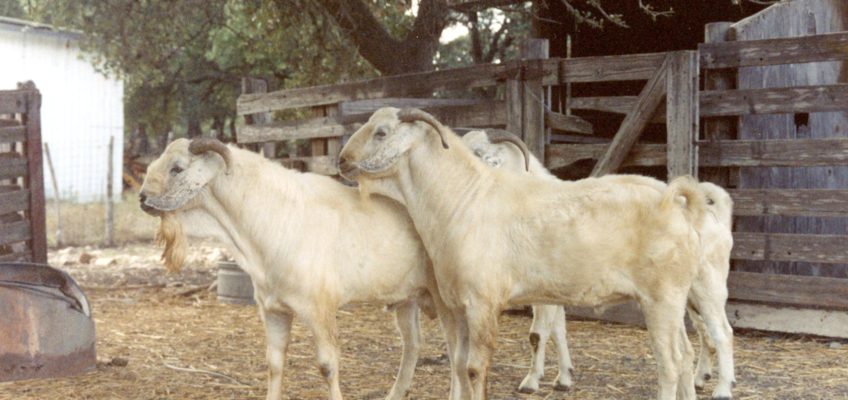Few would argue with the importance of individual freedom in a modern capitalistic society. Free choice is the essence of “who we are” in North America and the rationale for waves of immi- grants attracted to our shores. Few would also argue with the tremendous opportunities that these immigrants represent for the fruit of our labours.
Our “commodity” is chevon or goat meat. Whatever the name, the demand outweighs our current ability to produce it. While it is our “free choice” to produce our product in whatever fashion we see fit, some choices may be more economical than others. Some choices may also suit the biological nature of the caprine species better than others. Still others may suit our own, independent ex- pression or passion for the lowly goat.
The challenge for leadership; in this young and slowly evolving industry, is to create a collective sense of purpose in order that we all may enjoy our goats as we see fit. At the same time, we should not allow our own independent viewpoints to diminish the unified voice of the industry as a whole. In the big world of animal agricul- ture the small ruminant industry plays a very small part of the red meat industry. Why then would goat folks not see our sheep pro- ducing brothers and sisters as allies in the political process?
Recent, well meaning suggestions; that goat producers need greater independence from the sheep industry, in terms of agricul- tural funding and programming (voiced at the AGF meeting in Reno), may be logical on one hand but perhaps damaging our “collective voice” on the other. A stand-alone goat specialty pro- cessing plant is more difficult to achieve than a combined small ruminant facility. In Canada, a new national sheep producers co- operative was established with no thought to the inclusion of goats within this framework. Species-centric thinking has perhaps limited the improved economics of combined sheep and goat hauling and the logical cooperation of the two species as they tar- get the Halal ethnic trade. Were goat interests ignored or did the meat goat industry not present itself in a professional enough manner to deserve inclusion?
Seems simple, right? Not so fast! I have personally been in- volved in the meat goat industry for over twenty years and I am constantly dismayed with the seeming inability of goat producers to rally around a “common cause”. Here are a few examples of the “free wheeling entrepreneurial tribes” that exist within the meat goat industry.
How much time and energy has been wasted arguing about which registry to support? All major breeds in the U.S. have gone through this emotional debate. Which source of origin is the most pure? The most authentic? Is a pure New Zealand Kiko “the best”? Why? Which registry represents the will of “the people” best? Does the registry even have a definition for “full blood”; or is it a paper printing, private enterprise operation which will allow you to fill in the blanks? …Just send me your cheque!…Is a Boer goat a white goat with a red head “according to the standard” or does freedom of expression allow us to register anything that we deem fit to call “Boer”? Why do we need DNA to prove parentage when “back in the good old days, a man’s word was his bond”? Do standards, if divorced from functional performance, even mat- ter when you are outside the show ring and focused on profitabili- ty?
The meat goat industry is reminiscent of the “Wild West”. Joel Salatin’s comment that “you can’t legislate integrity” is a recogni- tion that the ‘free wheeling’ entrepreneurs have a place in a de- mocratic society that is based on freedom of expression. “Buyer Beware” places the responsibility on the consumer not the seller. In the meat goat industry there is no such thing as “the goat po- lice”. An individual breeder’s integrity may be on the line but you can’t call “the cops” when you think you might have been cheated and your Savannah goat doesn’t have black pigment and the speckles on its ears may be brown. Some folks; the performance oriented, might just question the true functional value of a black horn! Is a flat, “wild” horn better than a “round, black, horn?” Has anyone ever seen a uniformly coloured herd of Kikos? Why the distraction and division around breed standards when we all should be focused on producing meat?
The illogic of producing “show whethers” also disturbs some of us. Why would we ever select a male goat that looks like his sis- ter? Why would anyone pay those big dollars for an animal that can’t breed? Why would we take the loose skin covering off of a Boer goat to “clean up” its front and perhaps reduce its adaptabili- ty in hot weather? Why does adaptability even matter when you can make more money from a show whether that may not leave the shelter of a barn; than a range adapted, phenotypically cor- rect, Boer goat? Why is top line profile and length so critical to a judges decision yet most know that width PLUS depth PLUS length yields us more meat? Why the focus on a hindquarter when total VOLUME is the best indicator of meat yield? Clearly, freedom of expression and your personal market interest in the species dictates the “form” of the animals you choose.
It is also clear that the commercially biased have a great deal of concern with the “hobby goat crowd”. Unfortunately, these folks outnumber those of us who yearn for “scalability” and taking our place in the red meat “food system”. Democracy sucks! They out- number us!
The National Animal Health Monitoring System (NAHMS) re- ported that 46.1% of the American goat herd could not be catego- rized as “Meat” ( 42.4%), “Dairy” (10%) or “Fibre” (l.5%). The de- mocratic majority in the goat business is “Other”. A full 46.1% can’t be categorized. If they can’t be “pigeon holed “ how in the heck can we organize them? Do we even know what it is that dri- ves them to keep goats or where they sell them? It is difficult for some of us to even understand why the “psychic enjoyment” of a weekend packing trip, a homestead meat supply or the sheer en- joyment of goats running free in the backyard shouldn’t become “organized”. We also have difficulty understanding how their “op- erations” don’t conform to the “image” that modern agri-business demands.
Another group of free wheeling entrepreneurs that are having a tremendous impact on our small and fragmented industry are the direct marketers. They are fiercely independent, work incredibly hard to make their farm dream a reality but at the same time resist the temptation to create a larger operation or achieve perhaps greater profitability through some form of cooperation.
The prescription grazing crowd, when timidly approached, does not even pretend to be part of “production agriculture”. They are “service providers” and seem particularly “closed” when it comes to communicating openly with those who pursue the mun- dane objectives of profitability in the meat goat industry through product branding or greater industry cooperation. They seem in- credibly resistant to share the secret of their success unless of course you “pay for the information”. They are making enough money that meat goat sales are a minor part of their operational success. This crowd is likely to suggest that “you have to float your own boat” rather than recalling a more powerful message that “ A high tide floats all boats”.
In short, the meat goat industry is divided by many “tribes”. Successful leadership will have to be incredibly savvy and sophis- ticated in order to break into the “echo chambers” that these tribes represent. Within their conversational network, they talk and en- courage one another but often look with disdain, disbelief and dis- respect at the other tribes. Like all pack animals we like the en- couragement of being agreed with and thus stay within this com- fortable chamber that echoes our own biases and viewpoints on the industry. Building bridges between these industry tribes will be prerequisite to a brighter industry future.

